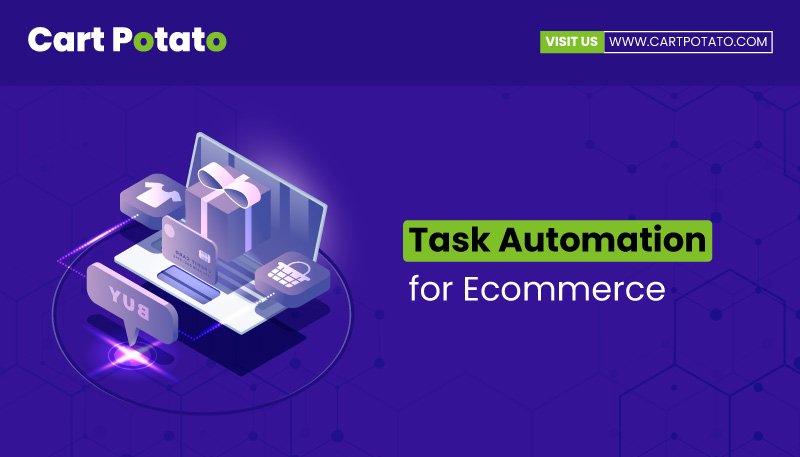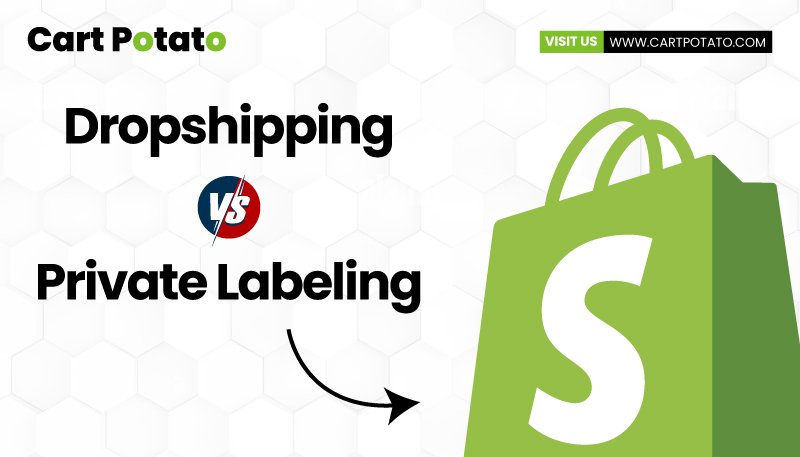
Task Automation for Ecommerce
In the dynamic landscape of ecommerce, where growth brings both opportunities and challenges, the demand for seamless omnichannel experiences and efficient supply chain management is ever-present. As businesses navigate through an endless to-do list, task automation emerges as a strategic solution to alleviate the stressors and enhance productivity.
Understanding Task Automation
Task automation involves leveraging software to execute predefined tasks without direct human involvement, triggered by specific events. The primary goal is to streamline repetitive business processes, reduce errors, and liberate human resources for more intricate and creative endeavors.
Tasks such as order tracking, payment confirmations, and addressing basic customer queries, often time-consuming and repetitive, become ideal candidates for automation.
Systems like Shopify Flow, with its low-code drag-and-drop functionality, exemplify task automation tools. Following a trigger, condition, action format, these tools ensure that critical steps are taken efficiently.
Benefits Unveiled
Increased Productivity
– With 94% of workers engaging in repetitive tasks, automating workflows allows employees to dedicate more time to tasks that require their specialized skills.
Accuracy
– Task automation minimizes mathematical and clerical errors, ensuring timely and error-free completion of mission-critical tasks.
Reduced Effects of Labor Shortages
– Automation enables scaling with existing teams, mitigating challenges posed by talent shortages and resourcing issues.
Increased ROI
– The cumulative impact of increased productivity, accuracy, and scalability contributes to enhanced business profitability.
Exploring Task Automation in Ecommerce
As businesses scale, dealing with complex workflows, time demands, and repetitive manual tasks becomes inevitable. Task automation presents an alternative to hiring more staff, offering a modernized approach to scaling output.
4 Essential Types of Ecommerce Task Automation
In the dynamic landscape of ecommerce, where growth and efficiency are paramount, task automation emerges as a strategic ally. Ecommerce task automation, ranging from straightforward to intricate, aims to eliminate manual, recurring tasks, allowing businesses to concentrate on pivotal activities.
Here are four indispensable types of task automation for ecommerce companies:
Order Management and Fulfillment
As businesses expand, the intricacies of fulfillment logistics operations grow exponentially. Manual order verification becomes impractical, cost-ineffective, and burdensome for your staff.
Leveraging task automation, you can:
– Fully automate the order review and validation process.
– Progress orders ready to ship to the fulfillment stage.
– Identify and hold orders needing attention before shipment.
– Generate draft shipping labels.
– Send follow-up messages to customers during the shipping process.
Inventory Tracking
Efficient inventory tracking is crucial to avoiding stock outs or overstocking, directly impacting operational costs and profitability. Task automation facilitates:
– Notifications for low or out-of-stock items.
– Removal of unavailable items from the website.
– Reinstatement of items when new shipments arrive.
– Monitoring demand fluctuations to meet customer expectations.
– Streamlining the ordering process for seamless inventory flow.
Customer Support
Providing robust customer service and timely communication is a customer expectation. Managing one-to-one support at scale, especially for businesses with a large customer base, is a significant challenge.
Task automation in customer support involves:
– Automated sending of order confirmations, receipts, and shipping notifications.
– Customer notifications when wishlist items are restocked.
– Staff alerts to engage with customers based on factors like order history or query complexity.
– Real-time FAQ and order inquiry responses through chatbots.
Customer Retention
Maintaining a consistent revenue stream relies on fostering long-term relationships with repeat customers.
Automation aids in nurturing these relationships by:
– Initiating post-purchase nurture campaigns.
– Tagging customers for segmentation and targeted marketing.
– Creating ideal customer profiles to guide outreach and advertising.
– Tagging and tracking high-value and returning customers.
– Rewarding loyalty with points and perks, and offering targeted discounts to high-value customers.
Conclusion
In the ever-evolving realm of ecommerce, where growth presents both opportunities and challenges, task automation stands out as a strategic pillar for navigating the complexities of modern business operations.
As businesses strive for seamless omnichannel experiences and effective supply chain management, task automation emerges as a powerful solution to streamline workflows, enhance productivity, and empower teams to focus on strategic priorities.
The understanding of task automation involves harnessing software capabilities to execute predefined tasks, reducing reliance on manual efforts and minimizing errors. Tasks such as order tracking, payment confirmations, and customer queries, which are often repetitive and time-consuming, find efficiency through automation tools like Shopify Flow.
The benefits of task automation, including increased productivity, accuracy, resilience to labor shortages, and improved ROI, underscore its transformative impact on business operations. As businesses scale and face intricate workflows, task automation offers a scalable and modernized approach, mitigating the need for extensive human resources.
FAQs:
- What is task automation in ecommerce?
Task automation in ecommerce refers to the use of software to execute predefined tasks without direct human involvement. It aims to streamline repetitive business processes, reduce errors, and free up human resources for more complex endeavors.
- How does task automation benefit ecommerce businesses?
Task automation enhances productivity by allowing employees to focus on specialized tasks, minimizes errors, scales operations without extensive hiring, and contributes to increased return on investment (ROI).
- Can task automation be customized for specific business needs?
Yes, task automation tools often follow a trigger, condition, action format, allowing businesses to customize automated workflows based on their specific requirements and processes.
- What are the essential types of ecommerce task automation?
Four essential types of ecommerce task automation include:
– Order Management and Fulfillment
– Inventory Tracking
– Customer Support
– Customer Retention
- How does task automation contribute to customer retention in ecommerce?
Task automation in customer retention involves initiating post-purchase nurture campaigns, tagging customers for targeted marketing, creating ideal customer profiles, and offering loyalty rewards.
The Latest

The Psychology Behind High-Converting Shopify Product Pages
In a world where shoppers make split-second decisions, your Shopify...

Dropshipping vs Private Labeling: Which Is Better for Shopify in 2025?
Ecommerce is more competitive than ever, and choosing the right...

Shopify Plus: Enhancing Customer Experience in the Beauty & Wellness Industry
The beauty and wellness industry is one of the fastest-growing...


